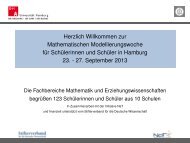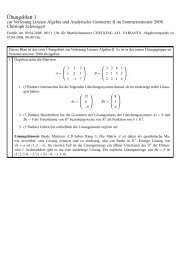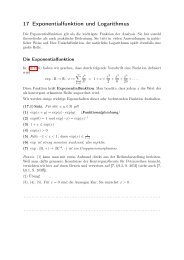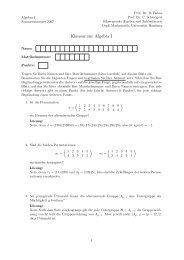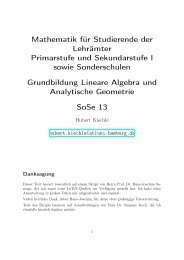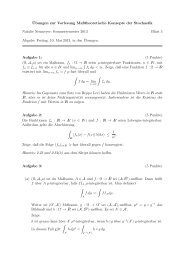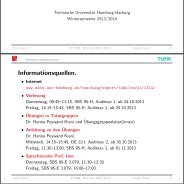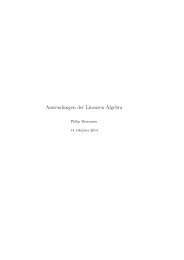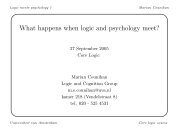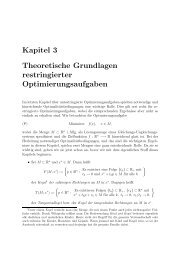pdf file
pdf file
pdf file
Create successful ePaper yourself
Turn your PDF publications into a flip-book with our unique Google optimized e-Paper software.
where Φ M,V (ϕ) is the K-linear map defined by prescribing values in V on the basis of<br />
F (M) using ϕ and extending linearly:<br />
Φ M,V (ϕ)( ∑ m∈M<br />
λ m m) := ∑ m∈M<br />
λ m ϕ(m) .<br />
In particular, we find the isomorphism of sets Hom Set (∅, U(V )) ∼ = Hom K (F (∅), V ) for all<br />
K-vector spaces V . Thus Hom K (F (∅), V ) has exactly one element for any vector space<br />
V . This shows F (∅) = {0}, i.e. the vector space freely generated by the empty set is the<br />
zero-dimensional vector space.<br />
2. In general, freely generated objects are obtained as images under left adjoints of forgetful<br />
functors. It is, however, not true that any forgetful functor has a left adjoint. As a counterexample,<br />
take the forgetful functor U from fields to sets. Suppose a left adjoint exists<br />
and study the image K of the empty set under it. Then K is a field such that for any<br />
other field L, we have a bijection<br />
Hom F ield (K, L) ∼ = Hom Set (∅, U(L)) ∼ = ⋆ .<br />
Since morphisms of fields are injective, such a field K would be a subfield of any field L.<br />
Such a field does not exist.<br />
To make contact with the notion of duality, the following reformulation is needed:<br />
Observation 2.5.21.<br />
1. Let F ⊣ G be adjoint functors. From the definition, we get isomorphisms<br />
and<br />
Hom C (G(d), G(d)) ∼ = Hom D (F (G(d)), d)<br />
Hom D (F (c), F (c)) ∼ = Hom C (c, G(F (c))) .<br />
The images of the identity on G(d) and F (c) respectively form together natural transformations<br />
ɛ : F ◦ G → id D and η : id C → G ◦ F .<br />
Note the different order of the functors F, G in the composition and compare to the<br />
definition of a duality.<br />
These natural transformations have the property that for all objects c in C and d in D<br />
the morphisms<br />
G(d) η G(d)<br />
−→ (GF ) G(d) = G(F G)(d) G(ɛ d)<br />
−→ G(d)<br />
and<br />
F (c) F (ηc)<br />
−→ F (GF )(c) = (F G)F (c) ɛ F (c)<br />
−→ F (c)<br />
are identities. Again compare with the properties of dualities. In particular, the left adjoint<br />
of an endofunctor is its left dual in the monoidal category of endofunctors. For proofs, we<br />
refer to [McL, Chapter IV]<br />
2. Conversely, we can recover the adjunction isomorphisms Φ c,d from the natural transformations<br />
ɛ and η by<br />
and their inverses by<br />
Hom C (c, G(d)) → F Hom D (F (c), F (G(d)) (ɛ d) ∗<br />
→ HomD (F (c), d)<br />
Hom D (F (c), d) → G Hom C (G(F (c)), G(d)) η∗ d<br />
→ Hom C (c, G(d)) .<br />
44




